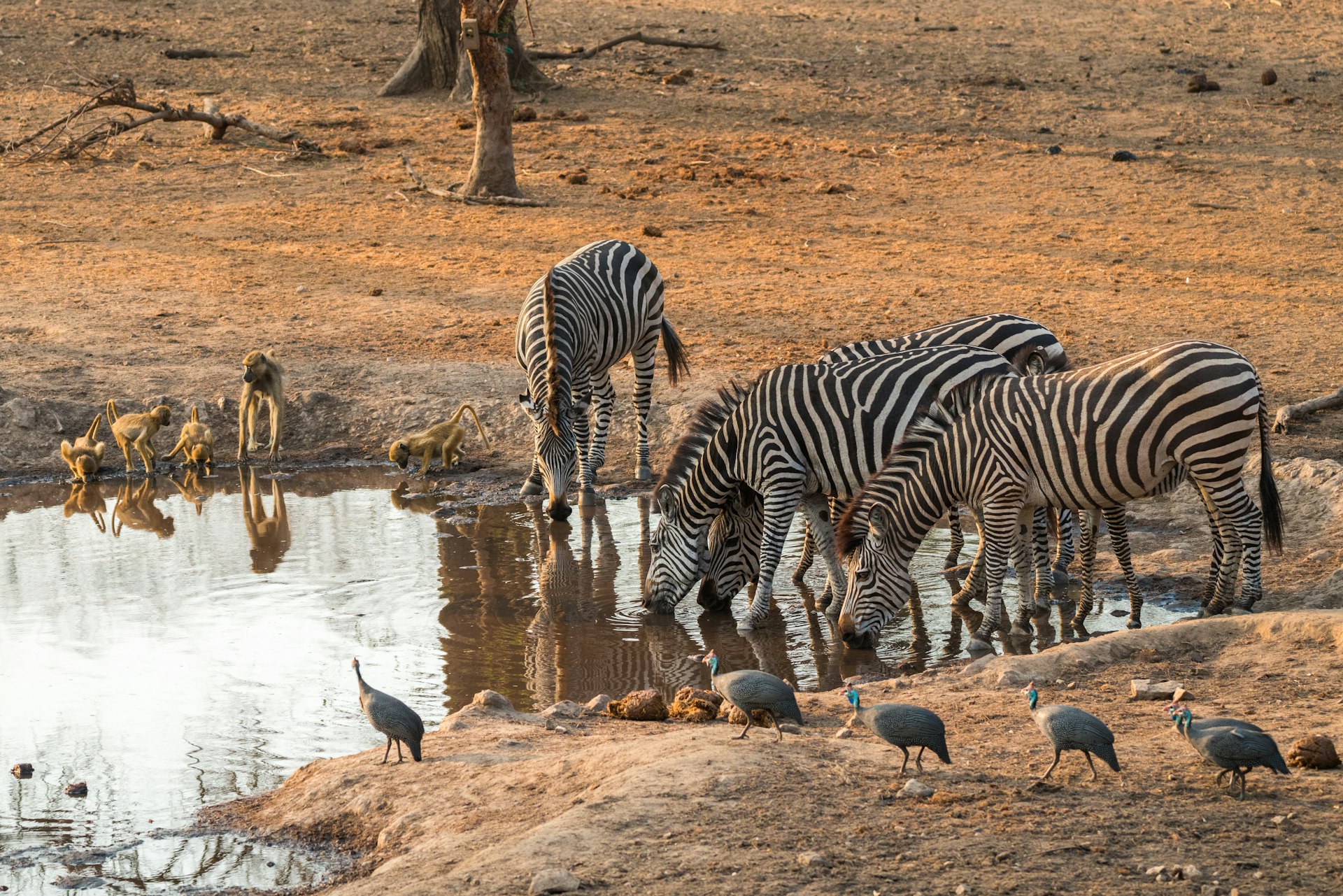Small and land-locked Malawi is loaded with diverse game parks, lively cities, varied topography, and a stunning lake that packs a punch no matter what time of year you visit.
The country has two distinct seasons: wet and hot (November to April), plus cool and dry (May to October). The best time to is dependent on what you want to do and see, but there’s plenty on offer all year round. Here’s our guide on when to visit Malawi.
June to October is the best time for wildlife watching
The winter months of June, July, and August bring bright sunshine, lush landscapes, and lower temperatures. Pack a jacket for chilly night drives in game parks and frosty mornings around the campfire. June is a good month for spotting elephants and large flocks of lovebirds in Liwonde National Park. With clear sunny days and lower temperatures, it’s ideal for tourists who want to skip the heat. However, nights and mornings can reach a chilly 30ºF (-1ºC) in the highlands.
Crocodile mating season is in July and the last gasp of winter brings windy, cooler conditions to Lake Malawi that make for excellent sailing. Spring starts in August and warmer days mean mid-day temperatures that hover around 80ºF (27ºC) and nights around 50ºF (10ºC). Come September and October, temperatures rise, the land dries out and wildlife-watching opportunities abound as hippos, elephants and water birds cluster around water sources. After a few days in the arid bush, refresh on the shores of Lake Malawi by sailing, snorkeling or just sipping a cocktail on the beach.

April to May is the best time to visit for budget travelers and budding photographers
In April and May, the rains have slowed down, making travel within wilderness areas easier. Photographers keen to capture Malawi’s big skies and vibrant shades of green will find plenty of places to shoot, from the coffee and tea estates of the Shire Highlands to Liwonde National Park and Majete Wildlife Reserve.
In April, male antelopes clash in the national parks as the rutting season gears up. The lodges around Lake Malawi start to reopen, and the humidity drops. This is the best time to snag some cheap deals on accommodation. Temperatures drop in May, and days turn dry and sunny as winter sets in. All lake lodges are open, and in the game parks, the wildlife action picks up. Catch a show of male rivalry in Liwonde National Park and Majete Game Reserve as the crocodile courtship season begins.

November to March is low season but it’s a great time to spot migratory birds
The brunt of summer brings heavy rains and shirt-drenching humidity. January and February coincide with mosquito season – which means a higher risk of catching malaria. Flooding can make roads in national parks impassable, while lake lodges start shuttering in January.
If you are traveling during these months, head to Nyika Plateau, where you’ll see hundreds of migratory birds, a wealth of rare and endemic orchids and wildflowers all in glorious bloom, and the chance to catch newborn animals taking their first steps. November is a good month to visit Nyika National Park, which sits at a cooler, higher elevation. Elsewhere, some remote bush lodges near flood-prone areas close because of impending rains.
Come December, some Lake Mawali vacations are still possible before hotels shutter for the off-season. By January, most are closed. This is when heavy rains bring dramatic thunderstorms, which can be a boon for photographers eager to capture big skies. Storms, however, can render roads challenging to navigate.
Flowers and birds are the highlights of February in Malawi, as the rains continue falling. Orchids explode with color as they bloom across valleys. The wet season is the best time for bird watchers, especially in Nyika National Park. Look out for eagle owls, wattled cranes, and cinnamon doves as well as the mountain marsh widowbird and mountain yellow warbler. The rain persists through March, bringing the possibility of flooding – but it’s a glorious time for birding. Young chicks take flight from their nests, preparing for the long journey back north.
